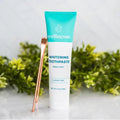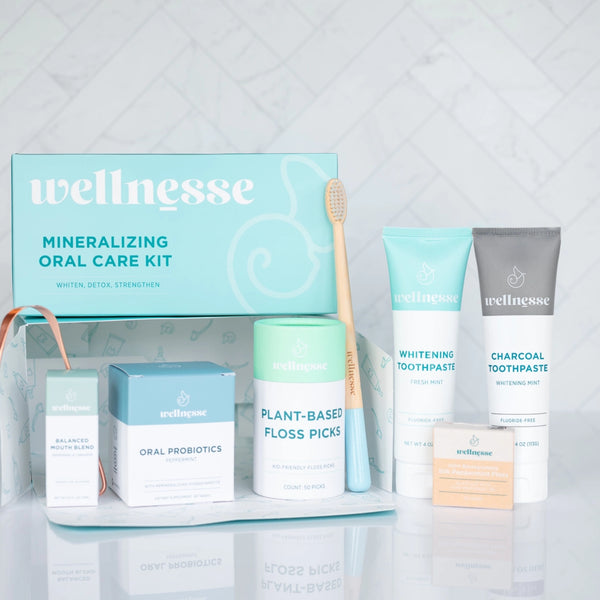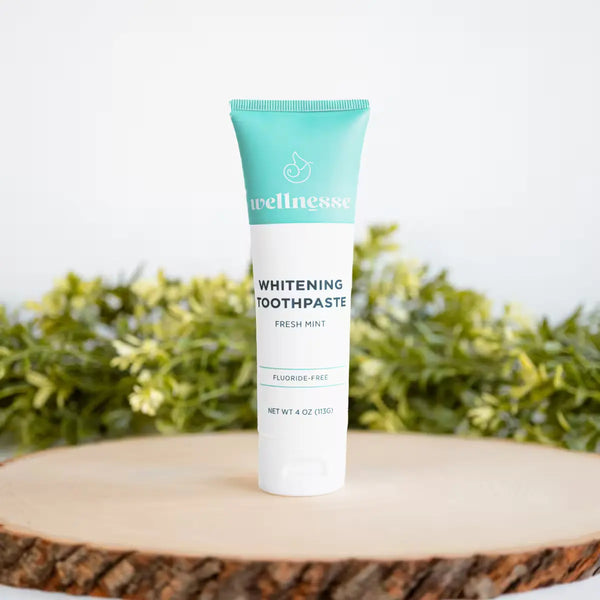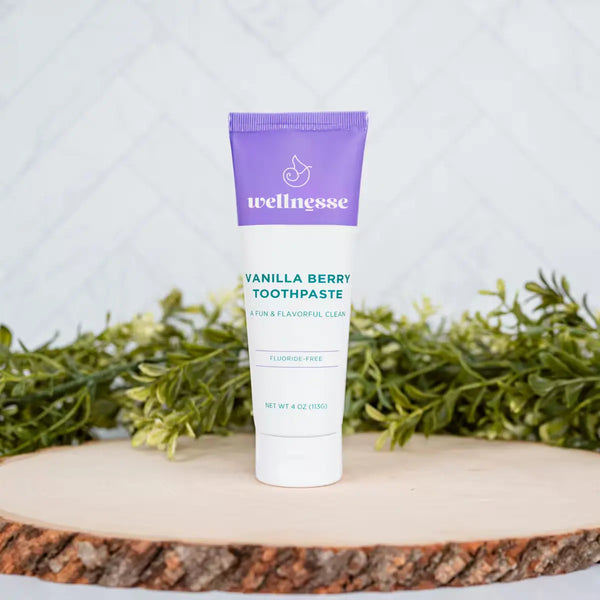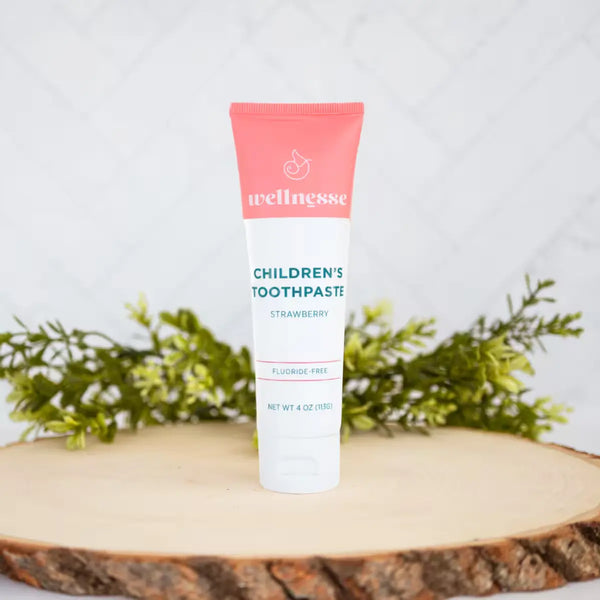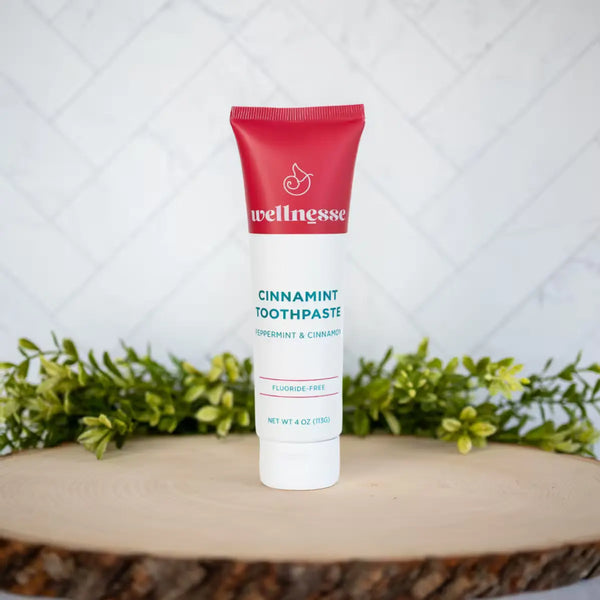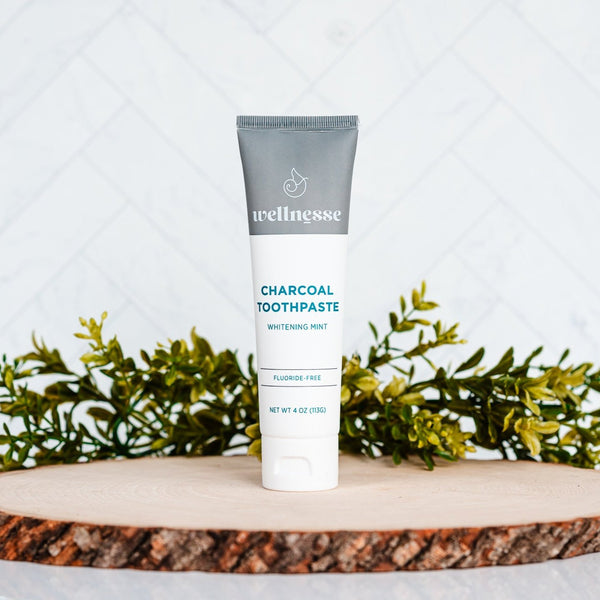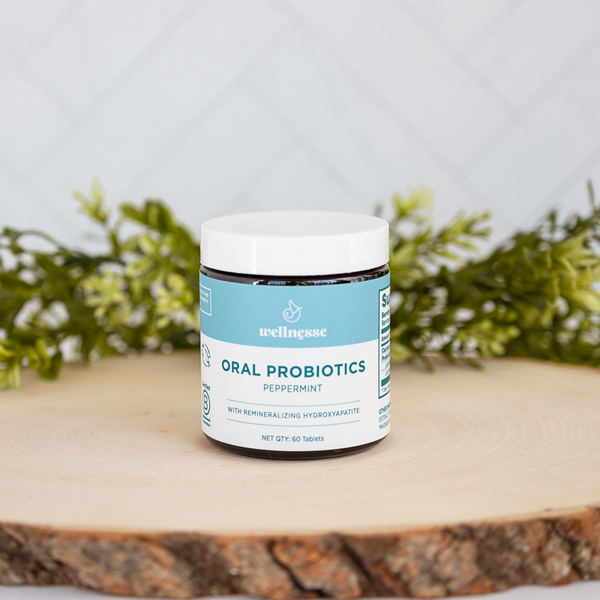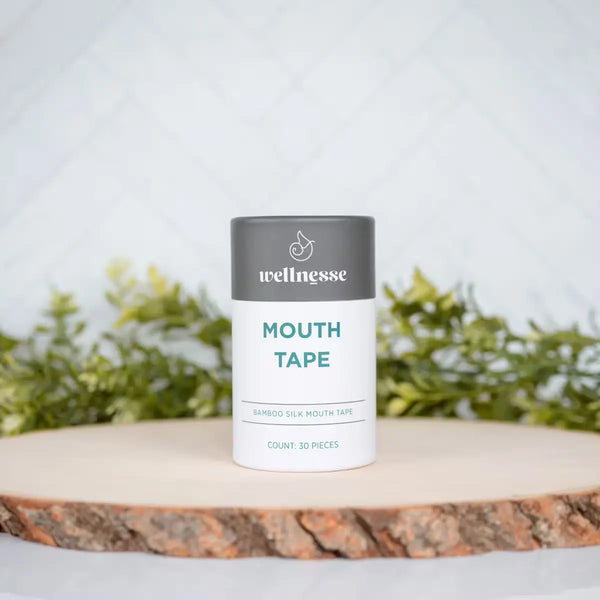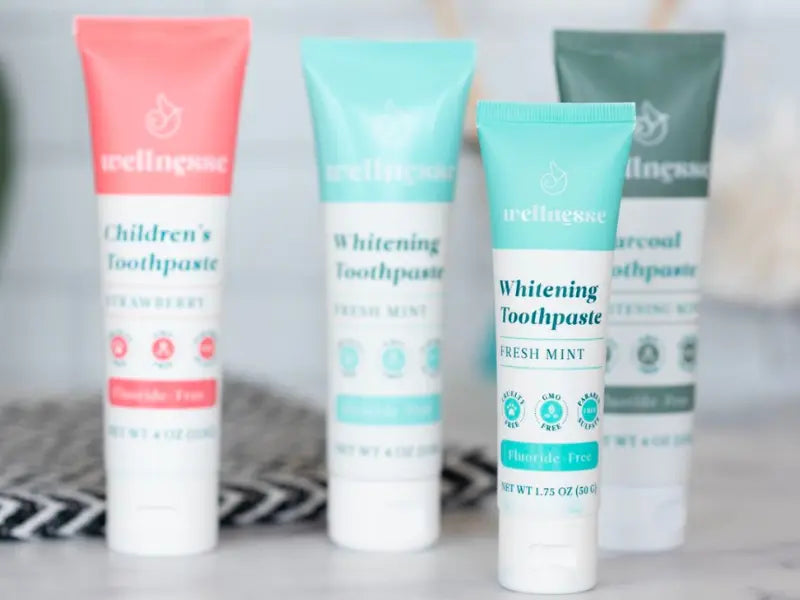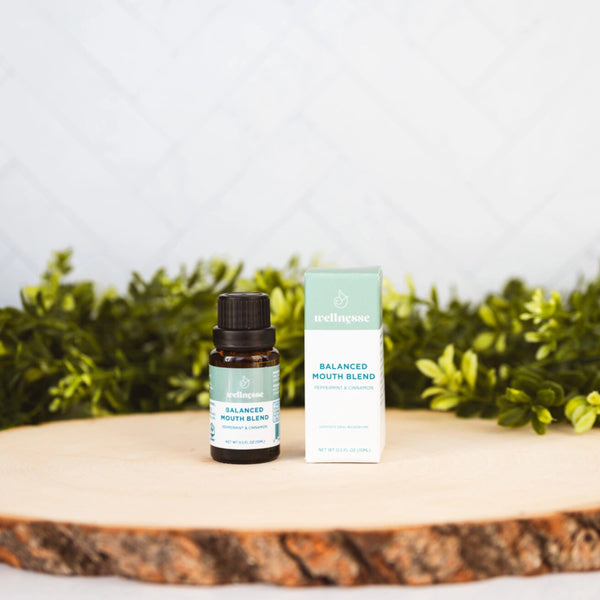Everyone loves a bright smile, but getting whiter teeth often comes at a cost. Many conventional toothpastes and whitening products rely on harsh abrasives or potent bleaching agents to scrub away stains. These methods can make teeth appear whiter quickly, but they may also wear down enamel and irritate sensitive gums over time. What if you could achieve gentle teeth whitening without stripping your teeth of their protective layer? Enter hydroxyapatite – a natural mineral-based solution that promises to whiten and strengthen your teeth at the same time.
What Is Hydroxyapatite and Why Is It in Toothpaste?
Hydroxyapatite (HAP) is a calcium-phosphate mineral that forms the primary crystal structure of our teeth and bones. About 97% of tooth enamel and 70% of dentin are composed of hydroxyapatite. This means our bodies naturally recognize and use it as a building material for strong teeth. When used in toothpaste, synthetic ones can directly integrate with the enamel, filling in microscopic cracks and defects in the surface. This process essentially “rebuilds” damaged enamel and makes teeth stronger. Unlike fluoride, it becomes part of your tooth structure, acting as a true enamel repair material. Brushing with a hydroxyapatite formula can fill and repair enamel on a microscopic level, restoring a healthier surface.

Hydroxyapatite’s ability to bond with and rebuild enamel is the reason it’s considered an active ingredient in any enamel repair toothpaste. The mineral particles latch onto the tooth, patching up rough spots and starting a hydroxyapatite enamel repair process every time you brush. Over time, this leads to a firmer and smoother enamel surface. Strong enamel not only resists cavities better but also reflects light more uniformly, which translates to a brighter appearance. By replenishing the very minerals teeth are made of, these toothpastes serve as an excellent toothpaste for enamel health. They supply your teeth with the raw materials needed to stay hard and glossy.
History and Usage of Hydroxyapatite in Dentistry
Over 50 years ago, NASA scientists were studying bone density loss in astronauts and experimented with hydroxyapatite for repairing teeth in zero-gravity conditions. The idea of restoring mineral content to teeth was later picked up by Japanese researchers, leading to the first hydroxyapatite toothpaste launching in Japan in the 1980s. This space-age discovery proved incredibly effective: Japan and other countries even recognize it as a proven anti-cavity agent, given how it rebuilds enamel. Initially, HAP toothpastes were mostly found in Asia and Europe, but they’re now making their way around the globe. What was once a high-tech solution for astronauts is now available to all of us for everyday use. And beyond preventing cavities, scientists have found that hydroxyapatite offers other benefits like improving tooth whiteness and reducing sensitivity.
While hydroxyapatite has recently gained popularity as a toothpaste ingredient, its roots in dentistry are much deeper and more varied. Long before it became a household name for enamel repair, hydroxyapatite was recognized by dental and medical professionals for its unique compatibility with human bone and tooth structures. This mineral’s chemical similarity to the natural components of teeth and bones made it a prime candidate for various restorative and regenerative dental procedures. One of the earliest and most significant uses of hydroxyapatite in dentistry was as a bone grafting material. When patients experience bone loss due to advanced gum disease, trauma, or tooth extraction, restoring bone volume is critical for maintaining oral health and supporting future dental work such as implants. Traditionally, bone grafts relied on autogenous bone or donor bone, both of which presented challenges like additional surgery, limited supply, or risk of immune reaction. The introduction of synthetic hydroxyapatite offered a biocompatible, stable, and readily available alternative. Its porous structure supports the growth of new bone cells, gradually integrating with the patient’s tissue and promoting natural bone regeneration. Hydroxyapatite-based bone grafts have become a mainstay in periodontal surgeries, implant placements, and maxillofacial reconstructions.
Beyond bone grafting, hydroxyapatite’s versatility has led to its use in a range of restorative dental treatments. In implantology, hydroxyapatite coatings are often applied to dental implants to enhance their integration with the jawbone—a process known as osseointegration. This coating encourages bone cells to adhere more readily to the implant surface, improving stability and long-term success rates. Also, hydroxyapatite materials have been used in the repair of jaw defects, sinus lifts, and the reconstruction of bone lost to cysts or tumors. Some restorative cements and filling materials also incorporate hydroxyapatite to improve their compatibility with natural tooth tissue and to stimulate mineralization at the repair site. The development of nano- and micro-sized hydroxyapatite particles has expanded its use from surgical applications to preventive care, including toothpastes and oral rinses. This evolution reflects a broader shift in dentistry toward biomimetic and regenerative approaches, using materials that work in harmony with the body’s natural processes.
How Hydroxyapatite Whitens Teeth (Without Abrasives)
When your enamel has microscopic rough spots, scratches, or porosities, those defects scatter light and make the surface look less shiny. They also allow stains and plaque to cling more easily, contributing to a yellowed appearance. Additionally, healthy enamel is semi-translucent. The natural yellowish color of the dentin can show through if the enamel is thin or full of microcracks. That’s why worn teeth often look more yellow. Hydroxyapatite tackles whitening from a few different angles all at once:
-
Filling Microscratches and Defects: The nano-sized hydroxyapatite particles in the toothpaste bond to the enamel and start filling in tiny cracks, scratches, and porous areas. By repairing these micro-imperfections, the tooth surface becomes smoother and glossier. A smooth surface reflects light more evenly (improving luster) and doesn’t trap stains as easily. Essentially, hydroxyapatite polishes the tooth not by abrasion but by literally adding mineral to the rough spots.
-
Forming a White Protective Layer: As it accumulates and integrates into the outermost enamel, it creates a white, opaque mineral layer that covers the underlying tooth structure. This layer blocks and reflects light, so less of the yellow dentin color shows through. The overall visual effect is that the teeth appear whiter because you’re seeing the new white mineral on the surface, and the yellow tones are being masked. Importantly, this isn’t a superficial paint that rinses off – it’s mineral that becomes one with the enamel, so the whitening is long-lasting as long as you keep using the toothpaste.
-
Gentle Stain Removal: While hydroxyapatite isn’t abrasive in the harsh sense, it does have a mild polishing action. The particles are tiny and round compared to, say, silica grains. They can help lift surface stains and plaque gently without eroding the enamel underneath. Think of it like a very fine polishing compound that buffs the surface clean. Hydroxyapatite also has a high affinity for plaque bacteria; it can bind to them and prevent them from sticking to teeth. Less plaque means fewer sticky stains and tartar forming, which also keeps teeth brighter.
All these mechanisms work together to produce gentle teeth whitening. After using a hydroxyapatite toothpaste for a while, people often notice their teeth looking glossier and more pearly. That’s the optical effect of a smoother, more mineral-rich surface. Studies back this up: a 2023 systematic review of hydroxyapatite toothpastes found consistent evidence that they effectively whiten teeth with regular use. The whitening tends to be a gradual, natural-looking improvement rather than the sudden stark white you might get from a bleaching strip.

One interesting thing about hydroxyapatite’s whitening is that it’s essentially side-effect free. There are no peroxides or strong chemicals involved, so users don’t experience the zingers of sensitivity that often come with bleaching treatments. There’s no excessive abrasion, so you’re not causing damage in the pursuit of a bright smile. You’re healing and whitening at the same time. It’s whitening by addition, not subtraction.
Beyond Whitening: Remineralization and Repair Benefits
The remineralizing toothpaste benefits of hydroxyapatite are a significant reason why dentists and oral care enthusiasts are excited about this ingredient.
-
Enamel Remineralization and Cavity Prevention: Every day, our teeth go through a cycle of mineral loss (demineralization) and gain (remineralization). Acidic foods, drinks, and bacterial acids from plaque cause minerals to leach out of enamel, which can eventually lead to tooth decay. Fluoride has long been used to aid remineralization by encouraging calcium/phosphate from saliva to redeposit into enamel. Hydroxyapatite takes it a step further by supplying a direct source of calcium and phosphate in the ideal form. It actively fills in demineralized zones with new mineral, essentially patching up early weak spots before they can turn into cavities. In areas where the enamel has started to thin or demineralize, hydroxyapatite can restore density. This not only prevents cavities but can actually reverse very early tooth decay by rehardening them. For anyone prone to cavities or with decalcification spots, the best whitening toothpaste that contains HAP is extremely beneficial.
-
Reduced Tooth Sensitivity: If you have sensitive teeth, hydroxyapatite toothpaste could be a game-changer. Tooth sensitivity often occurs when enamel is worn and dentin is exposed, or when tiny pores/tubules in the dentin are open to stimuli. This helps by sealing those dentin tubules and covering exposed areas with mineral, insulating the tooth’s nerve. In other words, it functions as a toothpaste for sensitivity, treating the root cause of sensitivity (open pathways to nerves) rather than just numbing the nerve as some potassium-nitrate sensitivity toothpastes do. Clinical studies have consistently shown that hydroxyapatite is as effective as traditional desensitizing toothpaste in relieving sensitivity, and often more effective because it actually plugs the leaks in the enamel/dentin. Many dentists now consider such formulas the best toothpaste for sensitive teeth because you get the double benefit of preventing future damage while easing current sensitivity.
-
Healthier Gums (Indirectly): As mentioned, HAP particles can bind to plaque bacteria and prevent them from sticking well to the teeth. Less plaque means less irritation to gum tissue and a lower chance of developing gingivitis. Also, since HAP toothpastes omit certain harsh ingredients (like aggressive whitening chemicals or SLS detergents in many cases), they tend to be gentler on the soft tissues. Some natural formulations combine hydroxyapatite with enzymes or herbal extracts to further support gum health, effectively serving as a multi-purpose toothpaste for whitening teeth.
-
Safer for the Whole Family: Hydroxyapatite is non-toxic and safe if swallowed, so it’s particularly great for young children or pregnant women – anyone who might want to avoid fluoride or harsh additives. Kids haven’t perfected their spitting technique when brushing and tend to ingest more toothpaste. Using this toothpaste for kids means you don’t have to worry if they swallow a bit.
Over time, the hydroxyapatite whitening toothpaste benefits add up: your enamel becomes harder and smoother, your teeth less sensitive, and your smile brighter. It’s a holistic improvement, addressing both cosmetic and health aspects of your teeth.
Hydroxyapatite vs. Fluoride: A Safer Alternative?
Toothpaste tubes have poison warning labels, and young children are supervised to avoid swallowing toothpaste. Excess fluoride ingestion can lead to dental fluorosis in kids, or even more serious issues like skeletal fluorosis or acute toxicity at very high doses. Hydroxyapatite, on the other hand, is the substance of your bones and teeth – your body handles it naturally. There are no known side effects with hydroxyapatite; it’s so non-toxic that even swallowing an entire tube of HAP toothpaste wouldn’t cause harm, whereas fluoride toothpaste carries a poison control warning for good reason. Overexposure to fluoride can disturb biological processes. Those concerns simply don’t exist for hydroxyapatite.
Because hydroxyapatite is biomimetic, it’s very friendly to the oral environment. It doesn’t upset the balance of your mouth’s microbiome as much as some agents can. Fluoride has mild anti-bacterial properties, which are good for reducing cavity bacteria, but it can also affect other non-harmful bacteria. HAP doesn’t “kill” bacteria; it just prevents them from sticking and forming plaque. This might mean it’s more neutral or gentle on the overall oral microbiome. People who are particular about maintaining a natural oral flora might favor HAP for this reason.
Choosing a Hydroxyapatite Toothpaste (and Where to Find One)
Ready to give hydroxyapatite a try? As its popularity grows, more brands are introducing HAP-based formulas. Shopping for a new toothpaste can be a bit overwhelming with all the options, so here are a few tips to keep in mind when you want to buy hydroxyapatite toothpaste:
-
Check the Ingredients List: Look specifically for micro-hydroxyapatite near the top of the ingredient list. The higher it appears, the more of it the toothpaste contains. Some products may label it as "n-HA." Hydroxyapatite should be a primary ingredient, not an afterthought at the very end of the list.
-
Fluoride-Free or Not: Virtually all hydroxyapatite toothpastes on the market are fluoride-free, as they’re positioned as alternatives. That’s great if you want to avoid fluoride.
-
Additional Benefits: Consider what other features you want. Many HAP toothpastes are SLS-free, which is gentler on the mouth tissues. Some have natural flavoring and no artificial sweeteners. Others might include xylitol (which also fights cavities), zinc or citrate for tartar control, or herbal extracts for gum health. For example, some formulas double as a gum repair toothpaste by including ingredients like aloe vera or green tea along with hydroxyapatite for holistic oral care.
-
Taste and Texture: Hydroxyapatite has a very mild taste, so these toothpastes rely on flavorings like mint, vanilla, fruit, etc., to make brushing pleasant. They also might not foam as much if they avoid harsh detergents. If you’re particular about the brushing experience, read reviews on the flavor and feel. Some people describe nano-HAP toothpaste as a bit “creamier” or less sudsy than regular paste – just something to get used to, knowing it’s working even if it doesn’t foam up.
-
Price Point: Be aware that HAP toothpastes can be a little pricier than common drugstore brands, partly because nano-hydroxyapatite is still a specialized ingredient. However, the gap has been closing as more brands enter the market. Also, consider that you may be investing a bit more in exchange for multiple benefits, potentially saving on buying separate whitening strips or sensitivity gels. It’s also an investment in your enamel, which could save dental costs down the line. You don’t need to break the bank; there are now moderately priced options available, and the difference is often just a few dollars more per tube for the HAP advantage.
When you’re ready to purchase remineralizing toothpaste, you can find hydroxyapatite options online through brand websites, natural product retailers, and even large e-commerce stores. Even Wellnesse offers a natural whitening toothpaste formulated with hydroxyapatite for enamel repair.

Hydroxyapatite whitens without harsh abrasives by adding back what teeth need instead of scraping them down. It fills in enamel to reflect light better, lays down a white coating that masks discoloration, and polishes away stains softly – all while fortifying your teeth against cavities and calming sensitivity. For those with sensitive or thinning enamel, especially, it might just be the best teeth whitening toothpaste you could choose, because it cares for your teeth even as it brightens them. And for anyone wary of fluoride or seeking a more natural approach, hydroxyapatite offers peace of mind with its stellar safety profile.
Sources:
-
DiCicco, M. (2024). From NASA to Your Mouth: The Dental Benefits of Nano-hydroxyapatite. Today’s RDHtodaysrdh.com.
-
DiCicco, M. (2024). Tech Today: Semiconductor Research Leads to Revolution in Dental Care. NASAnasa.gov.
-
Sarembe, S. et al. (2020). In Vitro Whitening Effect of a Hydroxyapatite-Based Oral Care Gel. Eur J Dent, 14(3), 335-341thieme-connect.com.
-
Limeback, H. et al. (2023). Tooth Whitening with Hydroxyapatite: A Systematic Review. Dent. J., 11(2), 50researchgate.net.
-
Burhenne, M. (2022). Hydroxyapatite vs. Fluoride: How Do They Compare? Ask the Dentistaskthedentist.com.
-
Van Scoyoc, S. (2023). Remineralizing: The Fluoride vs. Hydroxyapatite Debate. PerioNC.comperionc.com.
